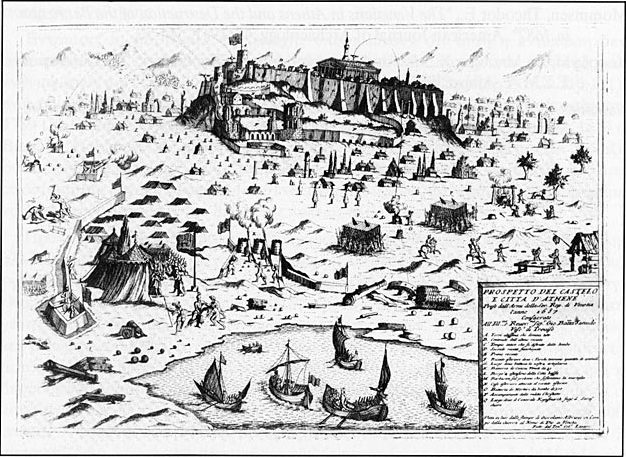


The Acropolis of Athens can be considered the most representative of the Greek Acropolis. It is a fortress, leveled at the top, which rises 156 meters above sea level above the city of Athens. The plateau is 140 m wide and almost 280 m long. It is also known as Cecropia in honor of the legendary snake-man Cecrops, the first Athenian king.

The Acropolis was declared a World Heritage Site by UNESCO in 1987.

The remains date back to the Archaic period, but traces have been found dating back to the Neolithic and Paleolithic periods; it is attested that some imposing buildings stood on the acropolis at the end of the 7th century BC, a time when the walls dating back to the Mycenaean age lost their defensive importance. In the first half of the 6th century BC, after the expulsion of the Pisistratids, the acropolis ceased to be a fortress.

The ancient fortifications, constructions, Templar buildings and statues were destroyed during the Persian occupation of 480 BC. The first reconstructive efforts of the Athenians focused on the most useful works.

The walls and ramparts were rebuilt under the rule of Themistocles and Cimon, while during the time of Pericles, to celebrate the victory over the Persians and the political, economic and cultural primacy of Athens, the reconstruction of the acropolis was carried out, with the construction of the Parthenon (inside which a colossal statue of Athena Parthenos was erected, made by Phidias and now lost), of the Propylaea and later of the Erechtheion and the Temple of Athena Nike.

In the late Roman Empire the Parthenon was transformed into a church dedicated to the Virgin Mary. In the Middle Ages the acropolis was transformed into a military fortress first by the Franks and then by the Turks. In 1687 the Venetians bombed the acropolis, causing extensive damage to the Parthenon, which, as it contained gunpowder deposits, blew up.
During the domination of the Ottoman Empire the acropolis was stripped of most of the marbles that adorned the pediments and of the metopes by Lord Elgin who brought them to England. In the nineteenth century the first excavations and restorations of the temples began, which led to sensational discoveries, such as the famous archaic statues of girls, the Kore. Most of the finds are exhibited in the Acropolis Museum in Athens.

During the work to free the Acropolis of Athens from the fortified structures built by the Turks, in 1852-1853 the French archaeologist Charles Ernest Beulé discovered the great staircase leading to the Acropolis and the fortified gate from the Roman era, since then called Porta Beulé , which still constitutes the main access to the archaeological complex.

The Acropolis was the highest part of the city. It was the religious center. Here stood the main temple dedicated to the protector deity of the poleis and the temples of other deities.
Acropolis of Athens
Address: 105 58
Phone: +30 21 0321 4172
Site:
http://odysseus.culture.gr/h/3/gh351.jsp?obj_id=2384Location inserted by
giulia